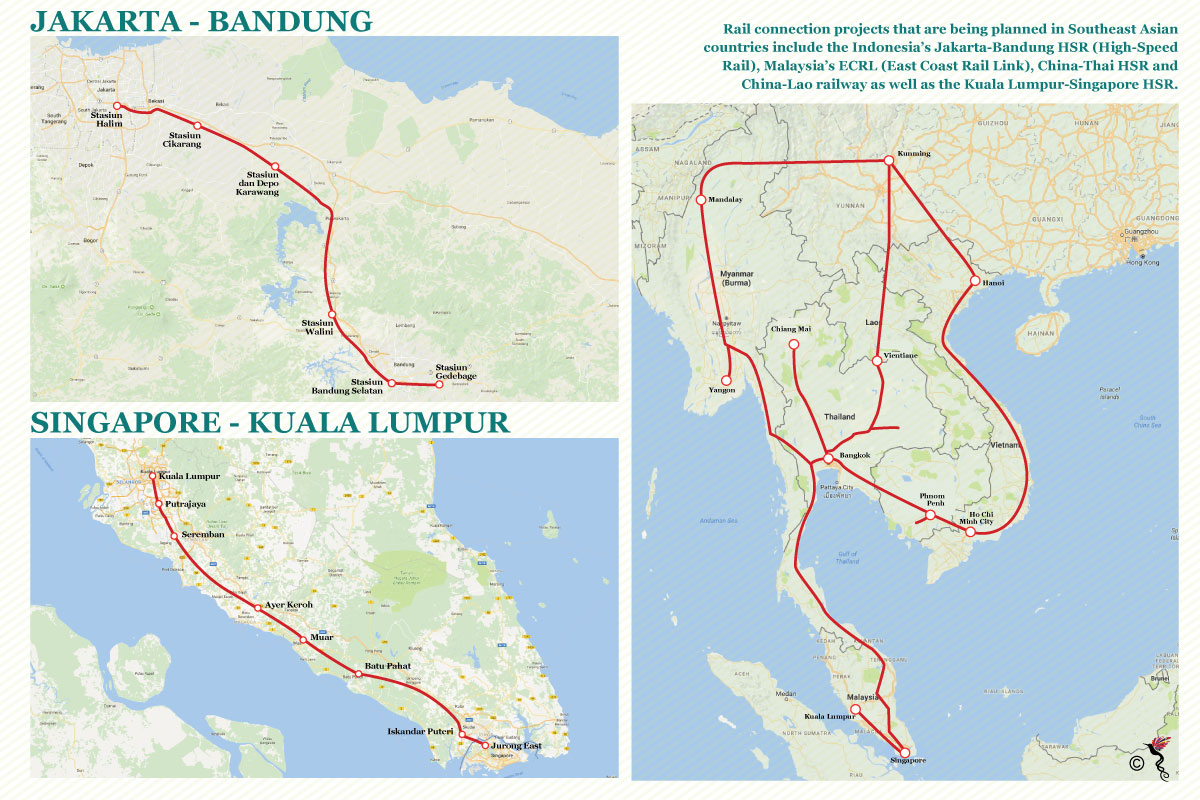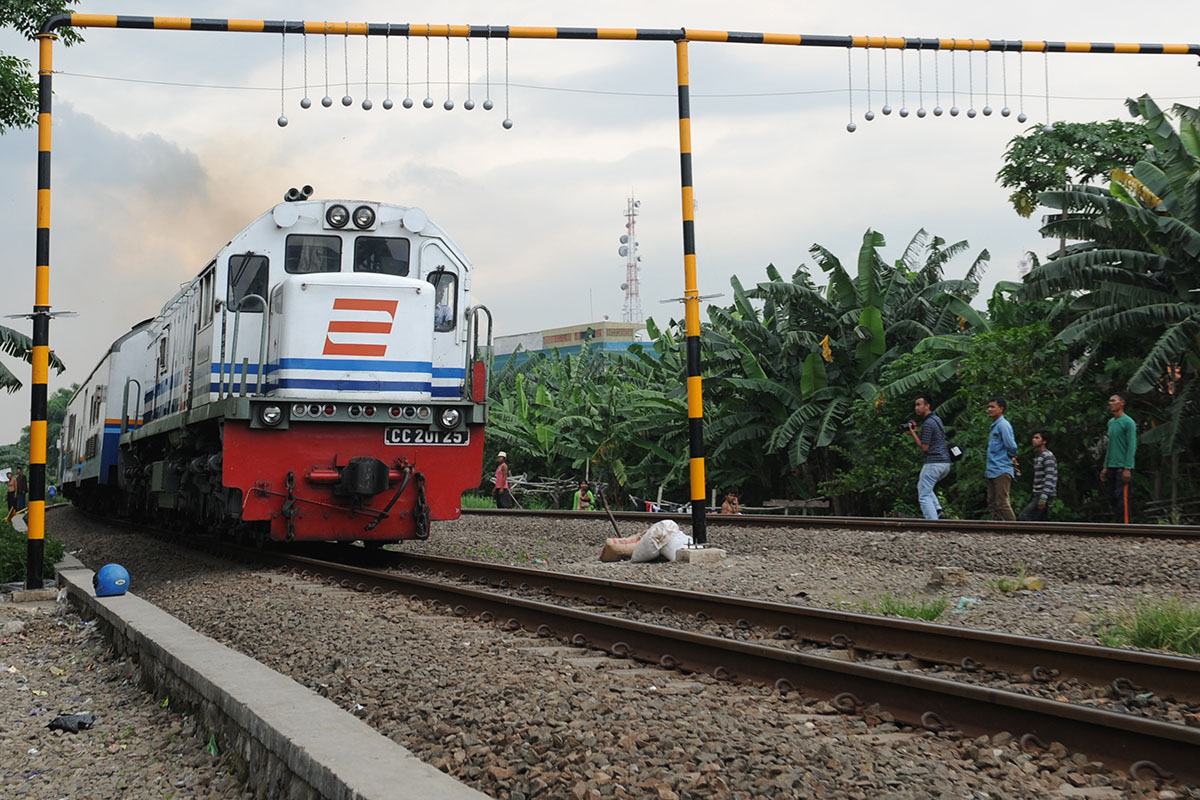Rail connection projects that are currently taking place in ASEAN (Association of Southeast Asian Nations) countries are expected to be a major boon and catalyst for the region’s economic growth in the coming years. Infrastructure development is vital for developing economies as it promotes and sustains economic growth. With well-planned infrastructures, the connectivity between businesses will also improve, thus driving trade growth within the region.
The Southeast Asian governments have long taken up various efforts and got involved in different collaborations to improve their infrastructure development in order to achieve greater economic growth and attract more foreign investment. They are now investing in initiatives that will improve their inter-regional connectivity via rail projects – that will also play an important role in boosting their trade and economic growth. The total planned rail projects in the region – including those currently under construction – are estimated to reach over 40,000 kilometres.
Rail connection projects that are being planned in Southeast Asian countries include Indonesia’s Jakarta-Bandung HSR (High-Speed Rail), Malaysia’s ECRL (East Coast Rail Link), the China-Thai HSR and the China-Lao railway as well as the Kuala Lumpur-Singapore HSR.
Infrastructure development will play a key role in driving the long-term economic growth of the Southeast Asian countries. It would also create new investment opportunities for investors, developers and businesses. The Kuala Lumpur-Singapore HSR project undertaken between the governments of Malaysia and Singapore is one of the prime examples of an integrated and seamless mode of transportation in the ASEAN region. The connectivity will enable businesses to be more productive and access a broader marketplace, which reduces travelling time on top of providing a comfortable journey between both countries. It is expected to spur economic growth in both Malaysia and Singapore, in the future.

Proposed rail lines within the ASEAN region.
The DBS (Development Bank of Singapore) has estimated that transport-related investment could be much higher than the initial phase, exceeding 200 billion dollars over a five-year period in ASEAN. Through the OBOR (One Belt, One Road) initiative, it does not only create demand for China-made goods (train equipment in particular) but also mops up some excess capacity while promoting the use of renminbi in the settlements. The China-led AIIB (Asian Infrastructure Investment Bank) has approved 2.8 billion dollars worth of OBOR-related projects in Asia – with another two billion dollars still in the pipeline. According to the DBS, infrastructure investment in most ASEAN countries have yet to catch up with the rest of Asian economies since the 1997-98 Asian Financial Crisis. Various studies have estimated that the region’s annual infrastructure deployment needs are in excess of 110 billion dollars a year, including transportation, power, telecommunications and other amenities.
The ASEAN regional community, which was formed in August 1967, has maintained strong economic relations with China. In 2015, China continued to be ASEAN’s largest trading partner with total bilateral trade recorded at 346.4 billion dollars, which accounted for 15.2 percent of ASEAN’s total trade. FDI (Foreign direct investment) flows from China to ASEAN amounted to 8.2 billion dollars in 2015, positioning China as ASEAN’s fourth largest source of FDI.
Sunway University Business School Professor of Economic, Yeah Kim Leng said China wanted to gain greater influence in ASEAN via its OBOR initiative, which was aimed at improving trade and capital flows between China and the other countries along its land and sea routes. “Its aggressive investments in ports and rail links in ASEAN countries under the OBOR will bring vast economic benefits and opportunities to both China and ASEAN,” Yeah told The ASEAN Post recently. The investment is expected to bring in multiple spill-over effects on the region while enabling China to have greater access to resources and better movement of their goods and services.
PwC (PricewaterhouseCoopers) reported that OBOR’s infrastructure investments impact at least two-thirds of the world’s population, as the 65 countries along its key routes have an estimated total population of 4.4 billion people. As these developing countries are characterised by their young working populations, the OBOR initiative has the potential to create hundreds of millions of jobs. Furthermore, PwC reported that the OBOR initiative also provides a method to address the significant financing needs in the least developed countries in the world which are situated along its trade routes. It has been estimated that 49 trillion dollars will be needed to finance global infrastructures from 2015 to 2030 where emerging Asia markets alone, excluding China, require six trillion dollars for the development of infrastructures. As of 2016, major multilateral banks, policy banks and commercial banks have announced a total of at least 186 billion dollars issued in loans or investments in countries along OBOR. In line with these announcements, China has said that it would invest a cumulative four trillion dollars in countries that are part of the OBOR trade route.
The ASEAN community is expected to reap huge benefits from the ongoing and proposed railway lines in the region. It would create an integrated transportation hub that will boost local and regional connectivity. It will also improve logistics capacity and economic efficiencies within the region while promoting regional tourism. However, much must be done to ensure that the proposed railway lines and other infrastructure developments are constructed and executed based on the proposed designs and schedule in order for ASEAN nations to benefit from the increased economic activities within the region.
